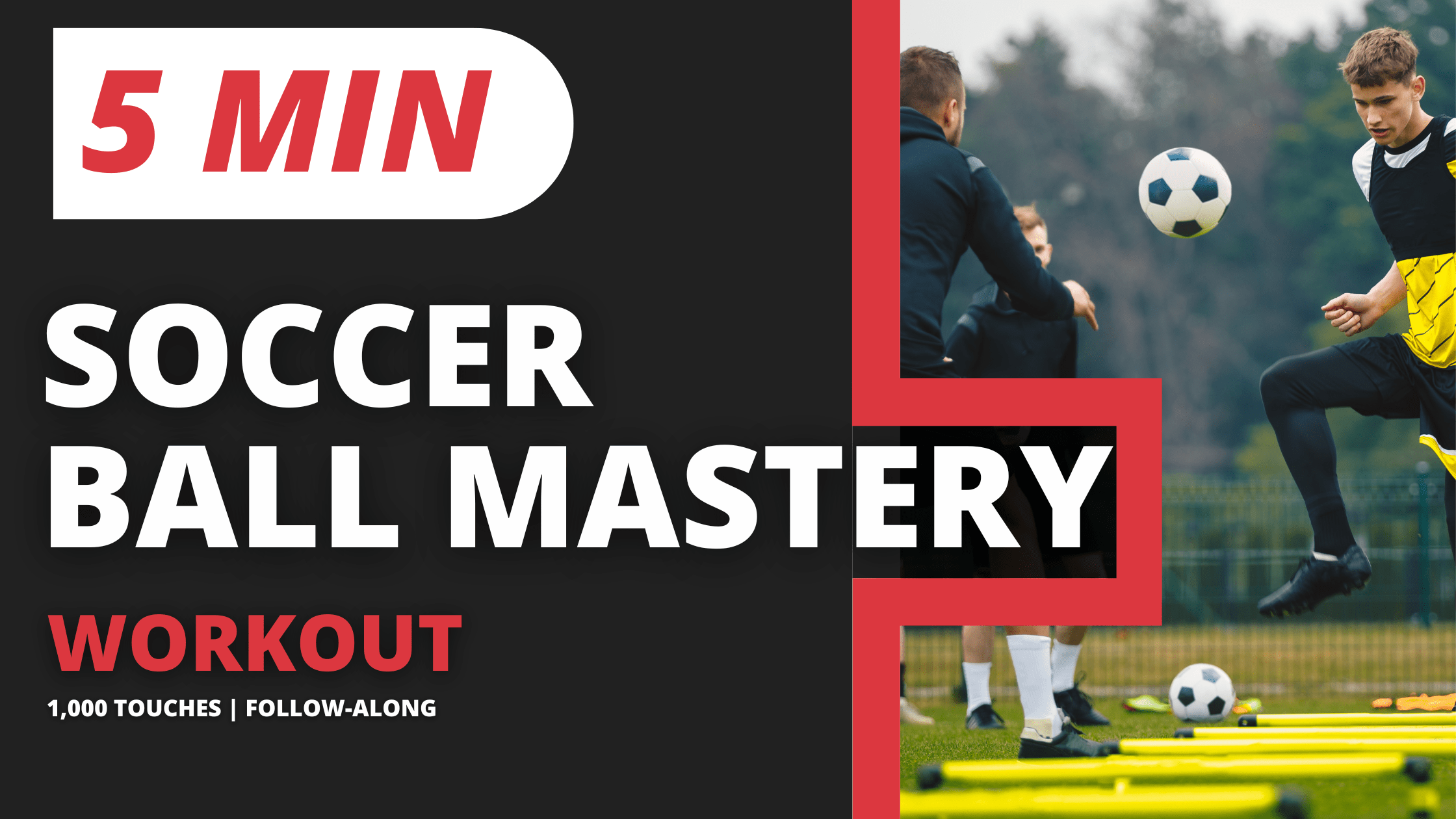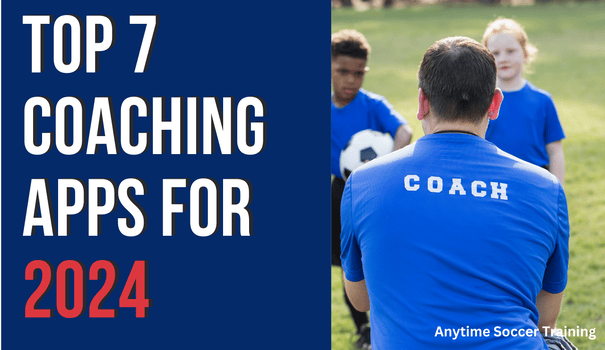
Welcome to our blog, dedicated to helping parents navigate the exciting world of youth soccer with their children. As a parent, you play a pivotal role in your child’s soccer journey, and in this article, we’re about to share some invaluable tips to empower you along the way.
From setting clear goals that align with your child’s age and aspirations to finding the right soccer club and balancing practice with fun, we’ve got you covered.
Join us as we delve into how you can nurture your child’s soccer talent and provide them with the best opportunities to learn, grow, and enjoy the beautiful game.
As a soccer dad and the founder of Anytime Soccer Training, I want to share the insights, tips, and experiences that are often overlooked, providing you with a comprehensive guide to help your child thrive on this soccer adventure.
Set Clear Goals Together
Begin your soccer journey by defining clear objectives that align with your child’s level of commitment. Think about what you and your child hope to achieve through soccer. Is it skill development, building character, or just having fun? Goals provide direction.
It’s also important to set both short and measurable goals as well as longer-term goals that are age-appropriate.
For example, my teenage son’s goals center around activities like stretching and morning workouts. These are short-term, measurable actions that support his longer-term development goals, such as improving his overall physical fitness and endurance on the field.
On the other hand, my younger son’s goals may be more focused on developing specific skills like using his non-dominant foot effectively or reaching a certain juggling record. These goals are age-appropriate and help him work on his technical abilities gradually.
By setting these clear, specific goals, you create a roadmap for your child’s soccer journey and ensure that their efforts are aligned with their development needs and aspirations.
Keep In-home Training Simple!
One of the most common mistakes many of us parents make is overwhelming our kids with too much information too soon. Save the complex strategies and tactics for their team coaches.
Related: 6 Mistakes All Parents Should Avoid
Instead, focus on helping your child master a few fundamental skills and give them simple, effective training routines.
Repetition is the name of the game when it comes to skill development. Create a routine that allows your child to get as many touches on the ball as possible in a short time. It’s amazing how small, consistent efforts can lead to significant progress.
Don’t Forget The Power of Repetition
Skill development is all about repetition. Create a practice routine that gives your child as many touches on the ball as possible. Consistency over time leads to remarkable progress.
Pro Tip: My sons do a 25 to 30-minute training session using Anytime Soccer Training before each game and practice. This adds up to nearly 30 hours per year of additional touches. The results are amazing.
The program enables players to get more touches since they don’t have to overthink it; they simply follow along. Try this simple ball mastery video taken from Anytime Soccer Training’s 1,000 Touch Series. It’s short and 100% follow-along.
Practice Both Feet (A lot)
As a parent, I’ve noticed that team training sessions often fall short when it comes to giving kids the time they need to hone individual skills. Coaches understandably have a tough time monitoring each player’s footwork closely.
That’s where my role as a parent becomes essential.
One of the most meaningful gifts I can give my child in their soccer journey is helping them become proficient with both their left and right feet.
This not only boosts their field versatility but also bolsters their self-assurance as a player.
Encouraging my child to work on their non-dominant foot and setting specific goals to improve it has been a rewarding part of our soccer experience.
Master Aerial Control
Aerial control, involving skills like juggling and ball control in the air, is something I’ve found to be really important. I understand that it might not be your child’s top choice when it comes to soccer activities, but trust me, breaking it down into short and enjoyable segments can make a big difference in helping them master this skill without getting frustrated.
Related: 4 Tips to Smash Your Juggling Record
Moreover, mastering aerial control isn’t just about showcasing fancy tricks; it greatly benefits your child during games. It builds their confidence and enhances their ability to handle unexpected situations on the field, such as high passes or controlling the ball in tight spaces.
It’s like having an extra tool in their soccer toolkit, and it can make a real difference in their performance and overall enjoyment of the game.
Kick-start each session with a juggling routine that’s tailored to your child’s skill level. Check out Anytime Soccer Training’s Juggle Master Program. It has over 500 juggling sessions covering every skill area.
Find a Supportive Soccer Club
From the perspective of a parent with two sons, I’ve learned that choosing the right soccer environment is crucial. My sons are in different clubs that align with their personalities and goals, and it has made all the difference. It’s essential to look for clubs with coaches who are not only knowledgeable but also deeply committed to guiding and motivating your child.
Make sure that your child is in a club where they receive proper guidance and are treated as an individual with unique potential.
This personalized approach can make their soccer experience more fulfilling and help them reach their goals while enjoying the journey.
Offer Support Not Pressure
Once you’ve set the groundwork, your role during games is all about offering love and support. It’s important to resist the temptation to coach from the sideline and simply let your child enjoy the game.
The results on the field will be a reflection of their hard work, and you can take pride in knowing that you’ve been there for them every step of the way.
Strike the Right Balance Between Practice and Fun
As you introduce practice sessions to your child, it’s important to ensure that they comprehend what’s expected while keeping the training sessions brief and enjoyable.
Consider incorporating interval-based training with timers to manage exercise and rest periods.
This approach not only maintains a steady rhythm but also adds an element of engagement to the drills, making the learning experience more enjoyable for your child.
Be Ready to Adapt
Kids grow and their interests evolve, including their passion for sports. Be prepared to adapt to new activities and sports as their preferences shift. Keep the lines of communication open and approach this evolution with an open mind.
Parting Thoughts
In closing, fellow parents, as we navigate the wonderful world of youth soccer with our children, I hope these insights and tips have been valuable in helping you empower your young athletes. I’ve been right there with my own sons, and it’s truly an adventure like no other.
Remember that setting clear goals, simplifying in-home training, and encouraging repetition can go a long way in shaping your child’s soccer journey.
Lastly, let’s be mindful of offering love and support during games and maintaining a balanced approach to practice and fun. And, as your child’s interests evolve, be ready to adapt, explore new activities, and keep those lines of communication open.
Our kids change, and so do their passions. But with your guidance and understanding, their soccer adventure can continue to be a source of growth, joy, and unforgettable moments.











